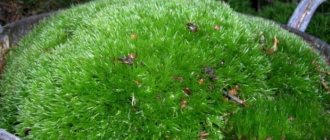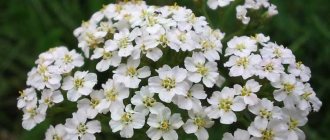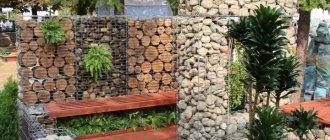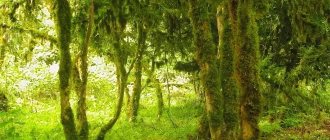A plant such as thuja (Thuja) is also called the “tree of life.” It is directly related to the genus of gymnosperm coniferous plants of the juniper family, for example, such as sequoia, cypress, juniper, taxodium and cypress. Thuja came to European countries from America or East Asia. The Latin name of such a plant has an ancient Greek root that means “incense”, “sacrifice”. This suggests a connection between the name thuja and the fact that some aromatic species of this plant are ritually burned as incense. This genus includes 6 species. Each such plant can live on average up to 150 years, but there are also older specimens. Several types of thuja and approximately 120 varieties of this plant are cultivated, which differ in quality and color of needles, and their crowns can also be of different shapes. In landscape design, such plants are cultivated as a tapeworm or in a group, and they are also used to decorate borders and alleys. Thuja is also suitable for creating hedges.
Features of thuja
Thuja is represented by evergreen trees or shrubs. Under natural conditions, their trunk diameter can be 6 meters and height - 70 meters. In gardening, the height of this tree, as a rule, does not exceed 11 m. Young specimens have soft, needle-like needles that are pale green in color. Moreover, in older specimens the needles are scale-like, crosswise opposite, and they have a dark green color. In such monoecious plants, the fruits are represented by small cones that have an oblong or oval shape, while their seeds are flat. Seed ripening occurs already in the first year. This plant requires little care and is resistant to cold and smoke. And thuja occidentalis is able to withstand frosty winters.
Caring for thujas.
How much do seedlings cost?
The range of coniferous plants is quite wide and varied.
The price of western thuja seedlings depends on the specific type and variety, as well as on the size of the seedling.
Thuja occidentalis Smaragd - from 200 rubles for small plants 15–20 cm high to 6,000 rubles for plants over 2 meters high.
Thuja western Braband - from 180 rubles per seedling 15 - 20 cm to 3300 rubles per 2 m seedling.
Thuja occidentalis Columna - a one-meter seedling costs around 750 rubles, a two-meter one - 3,300 rubles. A seedling 15–20 cm costs approximately 180 rubles.
Thuja western Holmstrup - a seedling 0.2 - 0.4 m tall will cost around 420 rubles, and 2500 rubles for a specimen 160 - 180 cm.
Western thuja Aurea Piramidalis - from 320 rubles for a seedling 0.15 - 0.20 m and more than 4000 rubles for a seedling 2 m high or more.
Planting thuja in open ground
Boarding time
Before you begin the actual planting, you need to choose the area that is best suited for this plant. Such a tree loves light, but it is harmful for it to be exposed to direct rays of the sun all day long. The fact is that this contributes to dehydration of the plant and leads to the fact that it tolerates wintering much worse. In this regard, the best option for thuja is a well-lit place, but during the midday hours, when the sun is most active, it should be in the shade. You should also remember that such a tree reacts negatively to drafts. Experts advise choosing soil enriched with nutrients for such a plant. So, turf soil is perfect, to which peat and sand should be added. But soil that is not too rich (sandy loam, marshy or clay) is also suitable for growing. You can plant thuja in open ground both in spring and autumn. But it should be taken into account that in the autumn the plant may not have time to get stronger and therefore will not survive the winter well.
How to plant thuja
The size of the planting hole directly depends on the size of the root system of the seedlings, taken with a lump of earth. So, the depth of the hole should be 15–30 centimeters greater, and its width – 35–40 centimeters. When planting several seedlings, the distance between them is influenced by the size of the adult specimen and can vary from 100 to 500 centimeters. If the plant is planted along an alley, then the distance between them should vary from 350 to 400 centimeters. At the bottom of the planting hole you should pour soil, which should be mixed with a not very large amount of rotted manure or compost. Before planting thuja, its roots should be immersed in water. And you need to pull them out only when air bubbles stop coming to the surface of the water. Then the seedling is lowered into the hole and placed exactly in its center. After this, the root system straightens out, and you also need to pay attention to the fact that the root collar of the seedling should rise slightly above the ground surface. After this, you should hold the tree with one hand and fill the hole with a good soil mixture with the other. Then compact it well, but carefully, trying not to damage the base of the trunk. After this, you need to water the thuja, using 15–20 liters per specimen. After the liquid is absorbed into the soil and it settles a little, its surface will need to be covered with a layer of mulch (peat, pine bark, wood chips or compost). Mulch will significantly slow down the evaporation of moisture from the soil, and will also protect the plant’s root system on days that are too hot or too cold. But it should be taken into account that the mulch should not fall either on the branches located at the very bottom or cover the trunk, since in these places the thuja may begin to rot.
Planting thuja
Medicinal properties
Young thuja cones have a lot of positive qualities . First of all, it has a calming effect on nerve receptors , no matter in what form the product is used (internally or externally). Aromatic extracts penetrate the brain centers through the nasal passages and promote relaxation, and, accordingly, improve overall well-being, relieve tension and muscle spasms.
- The main benefits of the raw materials in question are as follows:
- tropolones prevent the growth of cancer cells, which is an excellent cancer prevention;
- phytoncides and flavonoids stimulate the production of interferon, suppress the growth of bacteria and infections, and have a wound-healing effect;
- vitamins and minerals ensure restoration at the cellular level of all organ tissues and significantly increase immunity;
- due to the diuretic effect, stagnant processes are eliminated;
- air circulation in tissues improves;
- for problems with the respiratory tract, an expectorant effect is provided;
- Due to the effect on the nervous system, spasms are relieved and an analgesic effect is provided.
Also learn about the medicinal properties and uses of pine cones.
Caring for thuja in the garden
Watering
This plant loves moisture and responds positively to the sprinkling procedure. After the plant is planted, in the first weeks watering should be done weekly, with 1 to 5 buckets of water used per 1 specimen (depending on the size of the tree). Sprinkling brings particular benefits to young trees, as the soil and roots are saturated with water, and contaminants are removed from the needles, which significantly improves the plant’s respiration, and it not only looks much better, but also grows and develops much faster. Since the roots of this tree are superficial, loosening the soil surface, which is recommended after each watering, should be done to a depth not exceeding 8–10 centimeters.
Top dressing
In spring, the plant needs feeding and for this it is recommended to use complex mineral fertilizer, for example, Kemira-universal solution (per 1 square meter from 50 to 60 grams). If fertilizers were added to the soil during planting of the seedling, then the next time you need to feed the plant no earlier than in a couple of years.
Trimming
This plant responds very well to pruning. So, if you cut it often and strongly, it will become very lush and thick. Pruning can be done at any time, but it is best to do it in the spring, before the buds begin to open. If this tree is grown as a hedge, it must be pruned and this should be done systematically. If the thuja grows as a single plant, then it will still need thinning trimmings, as well as sanitary ones. In the same case, when these plants are cultivated in a group, they need formative pruning, otherwise they may acquire an unsightly, sloppy appearance. You need to start shaping the crown only when the thuja grows to the size you need. In some cases, the thuja may need only one pruning, which should be done in the spring, but in August or September, most often the plant has to be pruned a second time. There are varieties that require relatively frequent formative pruning, but it should be taken into account that in order to prevent the tree from weakening, it is not necessary to cut off more than 1/3 of the stem at a time. The thuja undergoes the first pruning only after the tree reaches two or three years of age. For pruning, you will need a very sharp and powerful pruner, so it should not chew the stems under any circumstances.
Transfer
There are times when it is simply necessary to transplant an already mature thuja. Such a plant is replanted quite easily, but you need to know a few fairly simple rules. If the tree is not very large, then the soil around it must be pricked with a fairly sharp shovel, and you must step back from the trunk from 0.4 to 0.5 meters. Then you need to carefully pry up the tree and pull out the root system along with the trunk circle. After this, the plant must be moved to the planting site using a wheelbarrow, and care must be taken so that the lump of earth does not collapse. Then the thuja is immediately planted in a new place. If the tree is relatively large, then it should be pinned in advance, or rather, 12 months before transplanting. The fact is that during this period the plant will be able to grow young roots inside a clod of earth, which was limited to a “circle”. As a result, the soil will not crumble when transporting the tree, and replanting the thuja will be completely painless. This tree will take root quite easily and quickly after transplantation.
Diseases and pests
Plants are affected by fungal diseases such as fusarium, brown schutte and cytosporosis. They can damage both stems and needles. In order to cure thuja, it is treated with Cartocide or Bordeaux mixture. A diseased plant must be sprayed from the beginning of spring. Treatments are carried out 2 times a month until the thuja recovers.
Aphids and false scale insects are able to settle on this tree. After this happens, the needles will begin to change their color to yellow and then die. To get rid of pests, it is recommended to use Rogor, Karbofos or Decis, while towards the end of June it is necessary to carry out 2 treatments with Chlorophos or Actellik, with an interval of 14 days.
Chemical composition
The therapeutic effect of thuja cones is due to their rich vitamin and mineral composition . The fruit contains a lot of chemical compounds that have antibacterial, disinfectant, soothing, wound-healing and analgesic effects. The harmonious combination of essential oils, vitamins and minerals ensures their complete absorption by the body.
Important! Thujone is a hallucinogenic toxic substance. When ingested in large quantities into the body, it causes poisoning and disturbances of consciousness, therefore, before using thuja cones as treatment, you should definitely consult a doctor and take into account the permissible dosages.
The composition of young thuja cones includes:
- vitamin A, C, E, group B;
- phytoncides;
- bioflavonoids;
- thujone;
- alcohol and hydrocarbon sesquiterpenes;
- aromodendrin;
- resins;
- tannins;
- essential oils;
- tropolones.
Reproduction of thuja
For propagation, both vegetative and seed methods are used. If the plant is a species, then seeds are quite suitable for its propagation. However, varietal and shaped plants should be propagated only by vegetative methods, which include: dividing the bush and cuttings. The fact is that the seeds of such plants do not retain the varietal characteristics of the mother plant.
Propagation of thuja by cuttings
In order to propagate such a plant by cuttings, the cuttings should be prepared in June. To do this, lignified stems that are 2 or 3 years old are cut off, and their length can vary from 25 to 40 centimeters. You can also use those stems of the current year that are semi-lignified, and their length varies from 10 to 20 centimeters. The cuttings should not be cut, but pulled out at the heel. The place where it is separated from the parent plant should be treated with a Heteroauxin solution. Then the cutting must be planted, deepening it by 15–25 mm. For planting, an earth mixture is used, consisting of peat, turf soil and sand, taken in a ratio of 1:1:1. It must be disinfected and for this purpose a lukewarm solution of potassium manganese is used. The cutting must be covered with polyethylene film. Only after the cuttings have completely rooted should they begin to be ventilated and hardened. Some time after this, the shelter is removed for good. In late autumn, these plants should be covered with sawdust, dry leaves or spruce branches. After the air temperature drops to minus 5–7 degrees, a film should be placed on top of the shelter.
Thuja Reproduction by Cuttings.
Growing thuja from seeds
Growing from seeds is a rather lengthy process; it can take 3–5 years. Only freshly harvested seeds are suitable for sowing. They must first be subjected to natural stratification; for this they are placed under the snow outside or on a refrigerator shelf, where they must remain from autumn to spring. Sowing is done in spring in open ground, and a place in partial shade is selected. Seed the seeds on the floor a centimeter deep, and on top of them you need to pour a relatively thin layer of sawdust from coniferous trees. After this, the beds must be protected from direct sunlight and shields are used for this, while making sure that the soil is constantly loose and slightly damp. When the seeds germinate, the surface of the bed should be mulched with peat. Once every 2 weeks it is necessary to add a solution of complete mineral fertilizer to the soil. At the end of the first season, the height of young thujas will be 7–8 centimeters. Before the onset of winter, these plants need to be covered with spruce branches, on top of which a film is laid. With the onset of spring, the shelter must be removed and it is necessary to continue to care for young thujas in the same way as in the first year of their life (watering, weeding, fertilizing and mulching). Only in the third spring, after the height of the trees is half a meter, will it be necessary to transplant them to a permanent place.
Thuja in winter at the dacha
Autumn
In autumn, you should stop both watering the plant and adding fertilizers to the soil. The point is that it must prepare for the coming winter.
How to cover a thuja
Young trees less than 5 years old should be covered with spruce branches. But before covering the plant, it should be hilled up high, and the tree trunk circle should be sprinkled with a thick layer of mulch (peat). There is no need to cover adult specimens for the winter, but it is necessary to sprinkle the tree trunk circle with mulch.
Wintering of thuja
If the winter period is characterized by heavy snowfalls, this can cause injury to plant branches even in mature and fairly powerful trees. To avoid this, in the autumn the crown of the plant is tied with twine. At the end of February, a non-woven covering material should be thrown over the tree, which will help protect it from the too intense spring sun. In some cases, cracks appear on the bark, this is due to a sharp change in temperature. In spring, they should be covered with garden varnish, and the bark should be thoroughly pulled off so that the wounds can heal.
It’s better to tie thuja for the winter!
Preparing for winter
Before the onset of cold weather, the plants are mounded high, sprinkling the trunk near the ground with a layer of peat. The crown is slightly pulled together with a rope and a protective covering is made with non-woven material.
Instead of agrofibre, you can use spruce branches to cover the thuja. When snow falls, a snow shelter is formed on the spruce branches.
Placticladus tolerates frosts down to −20 °C. A mark on the thermometer scale of −25 °C is a threat to the plant. Thuja is very difficult to tolerate sudden changes in temperature during the winter thaw.
Important! You need to remove the cover from an overwintered bush gradually, opening the trunk to protect the needles from sunburn.
When planning landscape design, the characteristics of each variety are taken into account: features, trunk size and height, preference for growing conditions. If you follow these simple rules, the oriental thuja will delight you for a long time with its delicate greenery and chiseled shape.
Types and varieties of thuja with photos and descriptions
Western thuja (Thuja occidentalis)
Western thuja is the most common cultivated species of this plant. In gardens, alleys, parks and squares you can see a large number of varieties and varieties of this species. In European countries it began to be cultivated in the 16th century. The tallest representatives of this species grow up to 8–12 meters. This plant is a long-liver of the plant world, so it can live up to 1 thousand years. While the plant is young, its crown has a pyramidal shape, but over the years it becomes ovoid. Cone-shaped, pin-shaped or columnar-shaped thujas are most often used for landscaping. Eg:
- Brabant - the height of such a plant varies from 15 to 21 meters, and its diameter is 3-4 meters. The crown is conical. The bark is light red or brownish-gray, flaking. There are scaly green needles. The light brown cones reach 1.2 centimeters in length and have an oblong-ovoid shape.
- Smaragd - this squat variety can reach 200 centimeters in height. This weakly branching plant has a cone-shaped crown. The stems are placed vertically, and on them are shiny evergreen branches that are widely spaced from each other. This variety is quite popular among gardeners.
The most popular varieties among thujas with a spherical crown are:
- Danica - this dwarf form is the result of the work of Danish breeders. The peeling bark is colored light red or brownish-gray. The scaly green needles are soft, thick and glossy; in winter they have a light brown tint.
- Woodwardie is a dwarf variety with a spherical crown. Its height does not exceed 2.5 meters, while the diameter of the crown can reach 5 meters. The branches and stems of this variety are straight and flat. The needles are dark green.
Also in cultivation there are varieties with a thread-like, cascading crown, for example, Filiformis. The height of the plant is no more than 150 centimeters. It has a wide cone-shaped or dense rounded crown. The hanging stems are long, thread-like, weakly branched. Young needles have a pale green color; in winter they develop a brownish tint.
More recently, a heather-like form of such a plant, for example, Ericoides, has appeared. The height of such a plant does not exceed 100 centimeters. Outwardly it looks like juniper. The wide-conical multi-vertex crown is rounded. Many thin elastic stems can be curved or straight. The awl-shaped needles are quite soft. In the upper part of the plant it is colored matte greenish-yellow, and in the lower part it is greenish-gray.
There is also a variety with 2 types of needles (scale-shaped and needle-shaped) on the same plant. The crown of such a plant grows quite bizarrely. So, after the plant is 8–10 years old, it is divided into several peaks, it seems as if in front of you is not one thuja, but several.
Thuja plicata
This type of thuja is also called giant. It can be found in natural conditions along the Pacific coast. This species is the most alpine. The height can reach up to 60 meters, with a trunk diameter of 3–4 meters. But in culture the tree is not so tall. The plant has several ornamental varieties and the most popular is Zebrina.
Korean thuja (Thuja koraiensis)
This is a wide shrub or tree whose height is 9 meters. There are very impressive whitish needles, almost silver. The tree must be covered for winter.
Japanese thuja (Thuja standishii)
Originally from the mountains of Central Japan. In nature it reaches a height of 18 meters. The crown is wide, cone-shaped. The bark is copper-red. The lower part of the branches is silver in color. If you grind them, you can smell the lemon and eucalyptus caramel. Plant growth is quite slow in areas with a cool climate, while in warm areas it is much faster.











